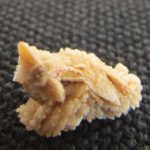
Recurrent kidney stone formers are at higher risk of end-stage renal disease than patients who form incident symptomatic stones, study finds.
Patients who have recurrent symptomatic kidney stones are at higher risk of end-stage renal disease (ESRD) than those who experience incident symptomatic kidney stones, investigators concluded. In addition, patients with asymptomatic stones and bladder stone formers have an increased all-cause mortality risk than non-stone formers.
“Recurrent stone formers might accrue incremental kidney injury with each stone event,” a research team led by Andrew D. Rule, MD, of Mayo Clinic in Rochester, Minnesota, reported online ahead of print in the American Journal of Kidney Diseases. “Therefore, treatments to prevent kidney stone recurrence may be beneficial for delaying CKD [chronic kidney disease] progression, especially because kidney stone events are associated with reductions in glomerular filtration rates and increases in proteinuria.”
Dr Rule and his collaborators conducted a historical matched-cohort study that included 6,984 stone formers and 28,044 non-stone formers matched by age and sex. All were residents of Olmsted County, Minnesota. Investigators used ICD-9 codes to identify residents’ first documented urinary stones in the county from January 1, 1984 to December 31, 2012.
Following a review of medical charts, the investigators categorized subjects into 5 mutually exclusive categories: incident symptomatic kidney (first stone event during the study period), recurrent symptomatic kidney (first stone event occurred before 1984 or residency in Olmsted County with recurrence in Olmsted County during the study period), asymptomatic kidney stone only (incidentally detected), bladder stone only, and miscoded (no urinary stone).
Over a mean follow-up of 12 years, ESRD developed in 65 stone formers (0.93%) and 102 non-stone formers (0.36%), Dr Rule’s team reported. Compared with non-stone formers, recurrent symptomatic kidney, asymptomatic kidney, and miscoded stone formers had a significant 2.3-fold, 3.9-fold, and 6.1-fold increased risk of ESRD, respectively, after adjusting for baseline diabetes, hypertension, chronic kidney disease, dyslipidemia, gout, and obesity. The investigators observed no increased ESRD risk among incident symptomatic kidney and bladder stone formers. They identified ESRD events (initiation of maintenance dialysis or kidney transplantation) using the US Renal Data System database.
“The higher risk for ESRD in recurrent symptomatic compared with incident symptomatic kidney stone formers suggest that stone events are associated with kidney injury,” the authors concluded.
In addition, asymptomatic kidney stone formers and bladder stone formers had a significant 40% and 37% increased risk of all-cause mortality risk, respectively, compared with non-stone formers.
Dr Rule’s team reported that “asymptomatic kidney stone formers and miscoded stone formers have underlying medical conditions such as urinary tract infections, cancers, and gastrointestinal diseases that led to incidental detection of kidney stones with imaging or were misdiagnosed as kidney stones. These medical conditions, rather than kidney stones, likely explain the increased risk for ESRD or mortality.”
According to the investigators, the study demonstrated the value of careful chart validation when studying kidney stone disease rather than relying on administrative codes.
Dr Rule and his collaborators also evaluated cause-specific mortality using underlying diagnoses on patients’ death certificates and found that 300 stone formers (4.3%) and 899 non-stone formers (3.2%) had deaths attributed to cancer. The risk of cancer mortality was higher among incident symptomatic kidney stone formers and bladder stone formers.
“The exact mechanism driving the higher risk for cancer mortality in stone formers is unclear,” the authors wrote. “One speculative pathogenic mechanism is that local irritation and inflammation contribute to chronic systemic inflammation and cytokine release, which promote tumorigenesis.”
Reference
Dhondup T, Kittanamongkolchai W, Waughan LE, et al. Risk of ESRD and mortality in kidney and bladder stone formers. Am J Kidney Dis. 2018; published online ahead of print.





